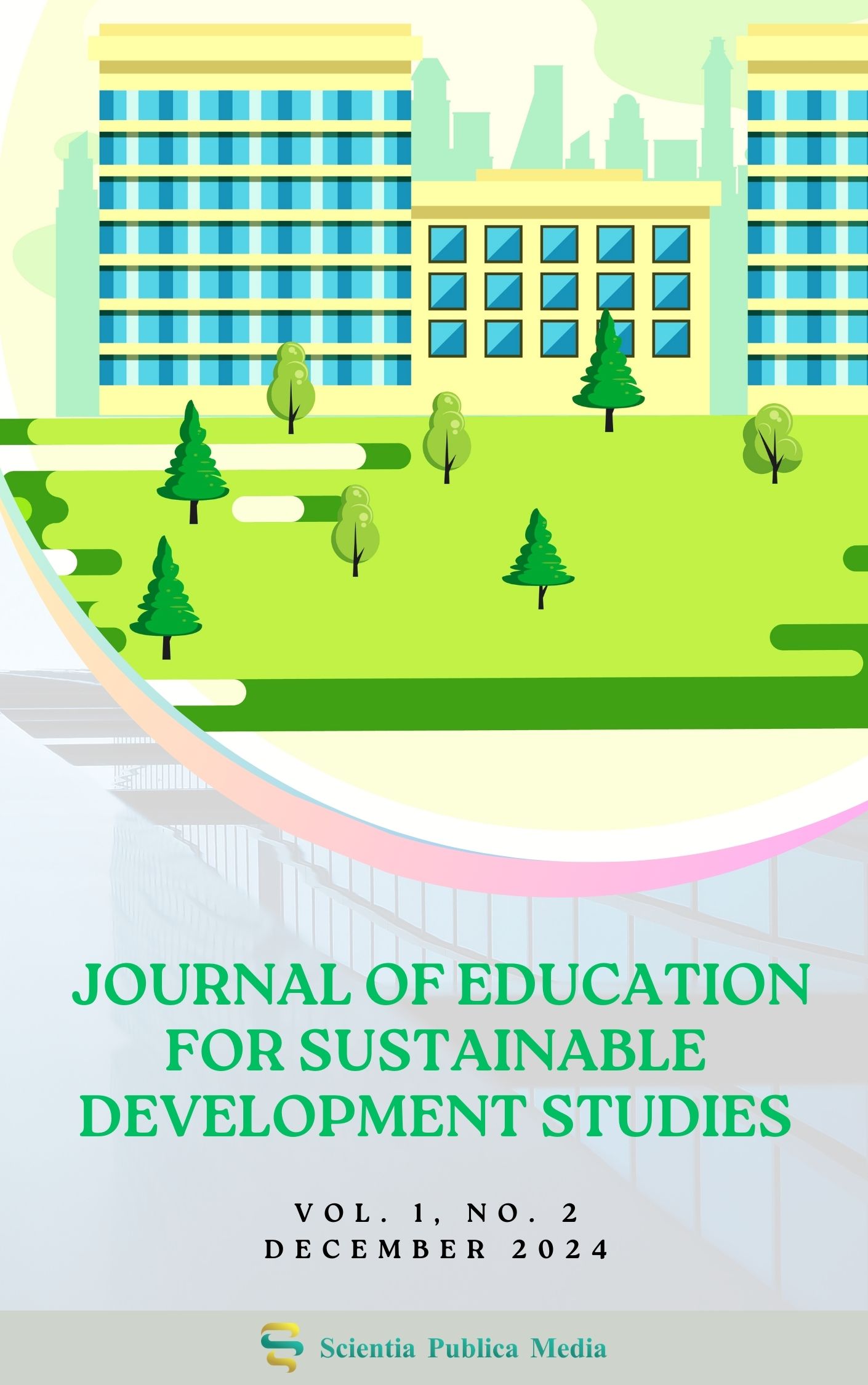Addressing Students’ Challenges in Acquiring Trigonometric Function Concepts: A Didactic Approach to Education for Sustainable Development
DOI:
https://doi.org/10.70232/jesds.v1i2.15Keywords:
Didactic Approach, Mathematics Acquisition, Students’ Difficulties, Teaching Strategies, Trigonometric FunctionsAbstract
The concepts of trigonometric functions constitute one of the main challenges that students face when studying mathematics in secondary and higher education. This paper addresses these challenges through a sustainable educational approach aligned with the principles of Education for Sustainable Development (ESD). The study identifies the main difficulties, such as graphical representation, real-life application of trigonometric functions and the conceptual understanding of angles and ratios. Through the methodology of observing students during lessons, weak points in the understanding of concepts such as the graphical representation of trigonometric functions, the use of trigonometric equations in real situations, and the difficulties arising from the lack of a clear connection between angles and ratios have been trigonometric identified. Based on these observations, didactic strategies have been proposed that include more interactive methods and the use of technology to improve student’s skills. The results of this study suggest that a new didactic approach, based on concrete examples and practical experience, helps to create a more stable and in-depth understanding of trigonometric functions. The findings of this study contribute to the development of educational practices focused on ESD, supporting students’ capacity to adapt, innovate, and engage in complex problem solving within mathematics education. Through a didactic approach that focuses on advanced teaching methods and the use of educational technology, this paper offers recommendations for improving teaching practices to facilitate the acquisition of complex mathematical concepts.
References
Brown, P. A (2021). The impact of technology on learning trigonometric functions. Mathematics Education Review, 52(4), 210-225.
Buchheister, K. (2020). Exploring trigonometric challenges in high school education. Journal of Educational Studies, 45(3), 120-132.
Carter, L., & Zhang, Y. (2022). Foundational knowledge in geometry as a predictor of success in trigonometry. Journal of Mathematical Education, 59(2), 198-212.
Collins, M., & Park, S. (2020). Collaborative learning approaches in teaching trigonometry. Mathematics Education Review, 54(3), 189-204.
Garcia, A., & Fernandez, M. (2021). The role of augmented reality in enhancing students’ understanding of trigonometric functions. Journal of Digital Education, 66(4), 310-328.
Hirsch, J., & Weill, R. (2020). Understanding the complexities of trigonometric functions in high school education. Journal of Mathematics Education, 56(2), 145-162.
Johnson, T. (2020). Impact of interactive learning methods on students’ comprehension of trigonometry. International Journal of Educational Technology, 48(1), 78-92.
Kim, S., & Lee, J. (2021). Cognitive obstacles in learning trigonometry: A classroom-based study. International Journal of Mathematical Education, 58(7), 304-318.
Lang, J., & Schmidt, H. (2021). Balancing traditional and innovative teaching methods in trigonometry education. Innovations in Mathematics Teaching, 58(6), 205-220.
Lee, S., & Kim, J. (2021). Visual tools in teaching trigonometry: A study of interactive methods in the classroom. Educational Technology Review, 63(4), 210-225.
Maciejewski, A. (2020). The role of dynamic simulations in understanding trigonometric periodicity. Mathematics and Technology in Education, 58(6), 310-328.
Orhani, S. (2022). Performing homework using ICT for graphical presentation of trigonometric functions: A qualitative analysis. International Research Journal of Science, Technology, Education, and Management, 2(2), 67-78.
Rixon, P., & Tyler, M. (2019). Bridging the gap: Helping students transition from geometry to trigonometry. Mathematics Teaching and Learning, 44(3), 290-306.
Smith, M. T., & Johnson, R. (2023). Integrating visual technology to enhance understanding of trigonometric functions. Innovations in Mathematics Education, 60(2), 88-102.
Stevens, K., Smith, L., & Brown, A. (2021). Integrating real-life applications in teaching trigonometry. Journal of Applied Mathematics Education, 50(7), 350-370.
Swan, R. (2019). Periodicity and complexity: Understanding the graphical representations of trigonometric functions. Teaching Mathematics, 47(1), 45-61.
Vandenberghe, T., & Johnson, L. (2019). Constructivist approaches to teaching trigonometry through problem-based learning. Journal of Applied Mathematics Education, 49(1), 45-60.
Williams, D. (2019). Foundational geometry and its role in learning trigonometric concepts. Journal of Geometry and Trigonometry, 47(5), 214-225.
Wilson, D. (2022). The role of foundational geometry in learning trigonometry. Educational Mathematics Research, 49(5), 163-178.
Zhang, M., & Lee, H. (2022). Adaptive teaching methods for improving students’ understanding of trigonometry. Innovations in Mathematics Education, 61(2), 115-130.
Downloads
Published
Issue
Section
License
Copyright (c) 2024 Senad Orhani

This work is licensed under a Creative Commons Attribution-NonCommercial 4.0 International License.


